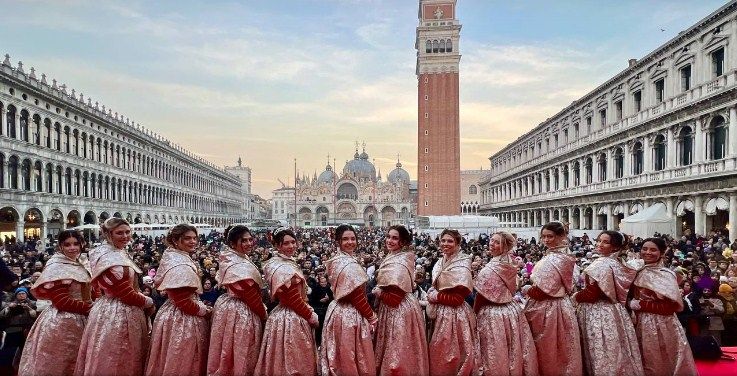
Carnivals are many, and very entertaining, but none have the exclusivity, originality and enchantment of the Venetian Carnival.
The Carnival of Venice, whose origins date back to the 11th century although it was consolidated in the 13th, has its own personality and magic and goes further than the image of the plague doctor's mysterious mask that bars the city's tales and disappears by the streets.
The first official document declaring the Venetian Carnival a holiday is an edict from 1296, when the Senate of the Republic declared the day before the Cuaresma a holiday.
In this era, and during many consecutive days, the Carnival lasted six weeks, from December 26th until the Christmas Day, although the celebrations often begin on the first days of October.
The Venetian canal definitively rose to an official level starting from the tradition of the 17th century, where the nobility was broken up to rise to union with the people. Indeed, masks are the most important element of the carnival.
The Venetian Carnival lasts 10 days. During the nights, bailiffs are held in salons and extras known as stocking companies hold fashion shows around the city. The most familiar are Los Antiguos and Los Ardientes.
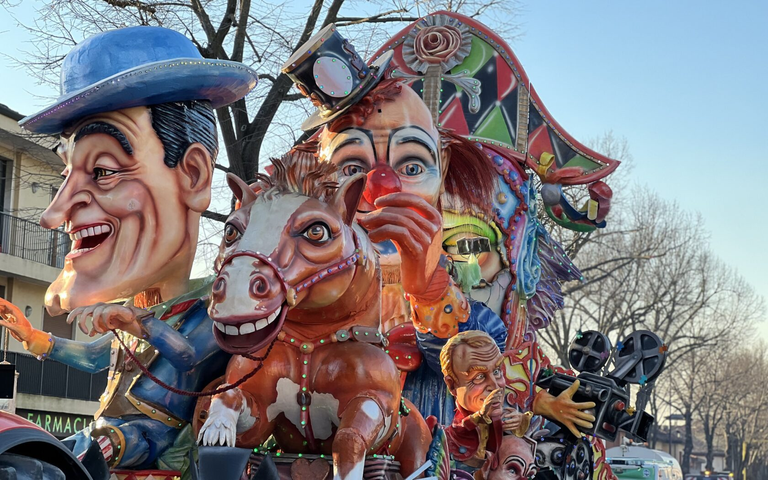
In the year 1797, Napoleón Bonaparte derogated the carnival celebrations, which were restored again in 1979 in an official form. Afterwards the holiday begins every day.
The costumes that are used are characteristic of the 1750s and include the noble mask, which is a white scarf with black silk robes and a three-pointed sombrero.
Since 1972 I have been adding other colors to the styles, although the masks have remained mostly white, plated and golden.
With the first edition of the latest Carnival, a program of events and a detailed calendar for the new big event will be established simultaneously. It is established that the starting date of the official celebrations coincides with the Saturday before the Jueves Gordo and ends with the Mars Gordo, with a total duration of only once days. Unlike the Carnival of the past, which for a long time had an official duration of six weeks, the modern Carnival is organized with a concentrated program, but full of individual events.
As in the past, also today the Carnival of Venice represents a grandiose popular fiesta for a large public every day. Street parties and events of all kinds amuse the days of groups of masks and tourists, who happily depart through the city.
In addition to the official parties in the plaza between campi and campielli, today as ever different private parties and parades of masks are organized in the great Venetian palaces. In these places, furniture and atmospheres unchanged over time, it is possible to relive the ancient splendors and tradition of the Carnival of the past. Among the events of international character, the Ducal Baile has been celebrated since 1994 and is celebrated in the Palacio Pisani Moretta of the 15th century, located on the Grand Canal. The name of the dance derives from the title of the elected leaders (dux), who governed Venice until the reign of the Republic of Venice in the XVIII century.
Every year, four hundred invited guests dressed in period clothes and masks will participate in the dance. The event is the reconstruction of a mask court from the 18th century and includes a Venetian cuisine dish. Over the years, the entertainment has featured performances by opera singers, musicians, burlesque artists and comedy characters.
The Masks.
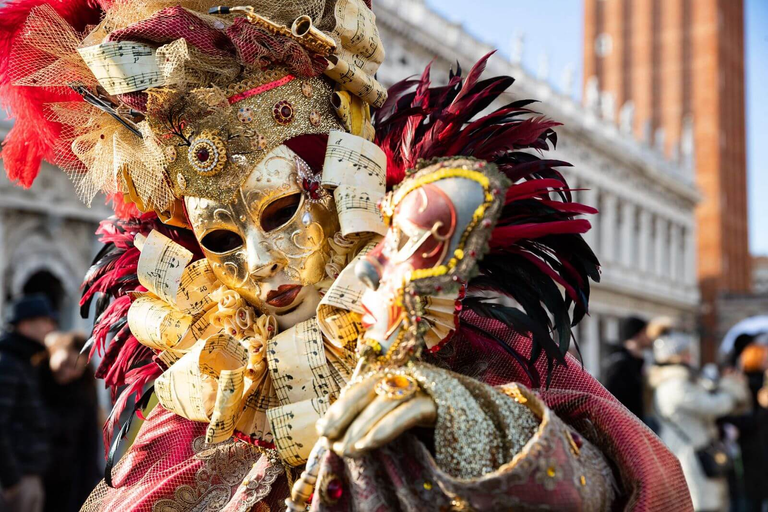
The Carnival of Venice was, during the last few days, one of the most hoped-for events of the year. Every winter, the city prepares to welcome tourists (and not only) in the most festive environment of all times, full of colours, traditions, typical sweets and the inevitable masks.
A little history: the Venetian Carnival took place from the beginning to the second half of the XIII century and from then on it represented a celebration of the freedom of the impious roles in society, inhibitions and social etiquette.
And it is precisely the need for relief and lightness that arose in the tradition, still alive, of wearing mask. Indeed, masks and disfigurements guarantee anonymity and lead to a kind of revelation among social classes and religious groups.
Are you planning an estate in Venice? Here's a look at our special offer dedicated to Carnival!
The Bauta.
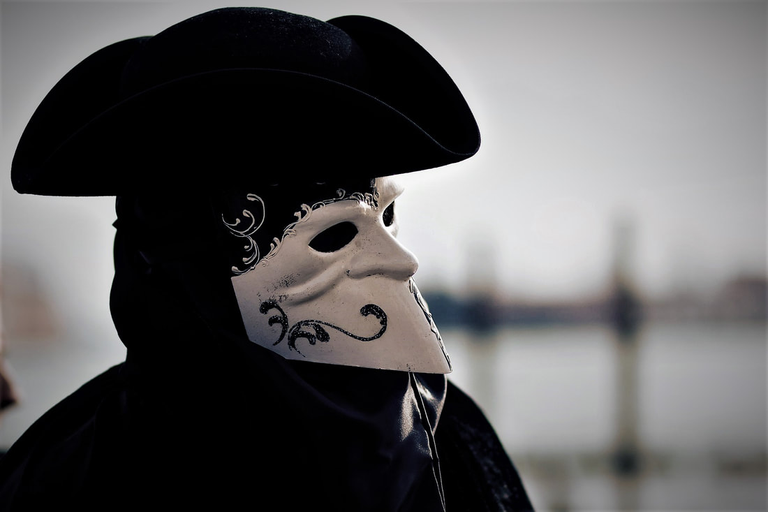
Among the traditional Venetian masks, the Bàuta is undoubtedly the most known, although only for more than 500 years of history.
It's a white rectangular mask with a small bump on the mouth. This was not just allowed to come and drink without quitting, until now It also created a slight change in voice to further guarantee anonymity.
He is accompanied by a cloak and the tricornio, the ancient Venetian three-pointed sombrero.
El Mattacino.
It is one of the typical masks of the Venetian Carnival that you are most likely to encounter: it is a type of payaso with a multicolored dress. Sometimes they were known to add scented scents to the runners, using a type of tirachinas.
La Moreta.

The Moreta, in Italian the moretta, was the feminine mask for excellence. Actually, its origin is French and it is a simple black hair mask.
The peculiarity is that the woman had to support it by pressing a button between her lips.
The Doctor of the Plague.
Mascara with a wide and pointed nostril, similar to the tip of a pájaro, which doctors originally used during plague epidemics to filter the air. Today it is one of the most recognizable masks during the Venetian Carnival.
Thanks to the rich tradition of the Commedia dell'Arte, there were also widespread masks and disfigurements that represented the stereotypes of Venetian society of the time.
Pants.
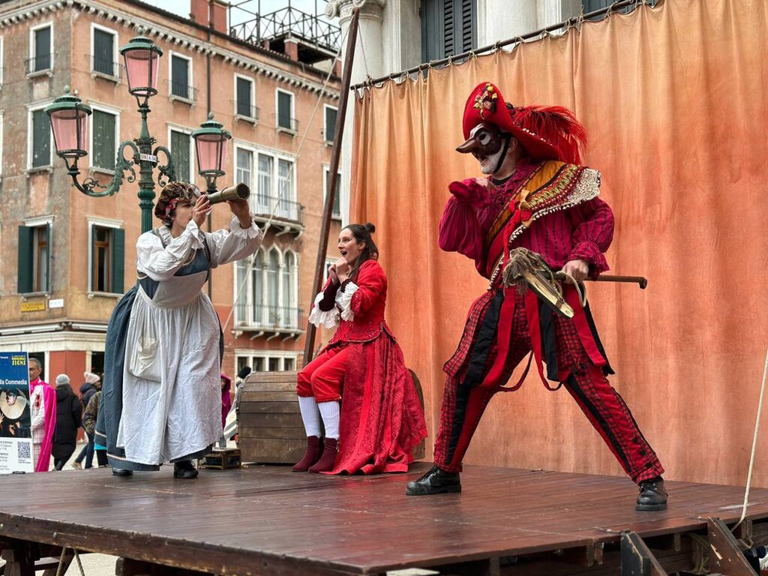
Pantalone is probably the best known Venetian mask. It is characterized by its frank Venetian habla and musical. The etymological hypotheses regarding the origin of the name are different: it could derive from San Pantalone or "plantados", a name with which the traders who began activities in the conquered lands and "plantados" were symbolically called the lion of San Marcos.
Pantalone is a old merchant, very rich and esteemed, often falling into ruin. It represented in all aspects the mercantile ethic of the Venetian burgues that began to impose itself among the dominant classes.
The outfit consists of a gray style wool gorro, a red chaqueta and a navy trousers. The belt hangs on a sword, a wallet or even a pouch. Seen a black head, in the red forest, and black zapatillas in the pies.
Arlequin.
It is the mask of the Commedia dell'Arte most connected to the people. The outfit consists of a chaqueta and trousers with very colorful and irregular patches, a white wool sombrero and a belt holding the Madeira spatula, normally used to mix the polenta. On his face he wears a medium black mask and he is a stupid and somewhat credulous person.
Columbine.
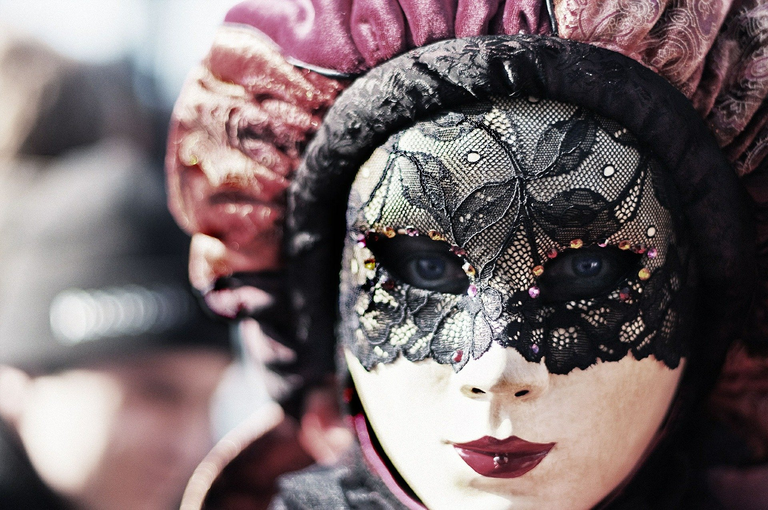
Colombina is Arlequin's true companion on adventures (she is in love with her) and, like her, she has her origins in popular tradition. Their distinctive reasons, which always flourish in the scenario, are cunning and coquetry.
The dress is simple, sometimes with patches of colors like the Arlequin, and is rowed with a white gorra and a bow of the same color. He rarely uses mask and is expressed in various dialects, the Venetian being one of his favorites.

Carnavales hay muchos, y muy divertidos, pero ninguno tiene la exclusividad, la originalidad y el encanto del Carnaval veneciano.
El Carnaval de Venecia, cuyos orígenes se remontan al siglo XI aunque se consolidaría en el XIII, tiene personalidad y magia propia y va más allá de la imagen de la nariguda máscara del doctor de la peste que abarrota los talleres de la ciudad y se desparrama por las calles.
El primer documento oficial que declara festivo el Carnaval de Venecia es un edicto de 1296, cuando el Senado de la República declaró festivo el día anterior a la Cuaresma.
En esta época, y durante muchos siglos siguientes, el Carnaval duraba seis semanas, desde el 26 de diciembre hasta el Miércoles de Ceniza, aunque las celebraciones a veces comenzaban ya en los primeros días de octubre.
El canaval de Venecia surge definitivamente a nivel oficial a partir de la tradición del siglo XVII, en donde la nobleza se disfrazaba para salir a mezclarse con el pueblo. Desde entonces las máscaras son el elemento más importante del carnaval.
El carnaval de Venecia tiene una duración de 10 días. Durante las noches, se realizan bailes en salones y las comparsas conocidas como compagnie della calza realizan desfiles por la ciudad. Entre las más conocidas se encuentran Los Antiguos y Los Ardientes.
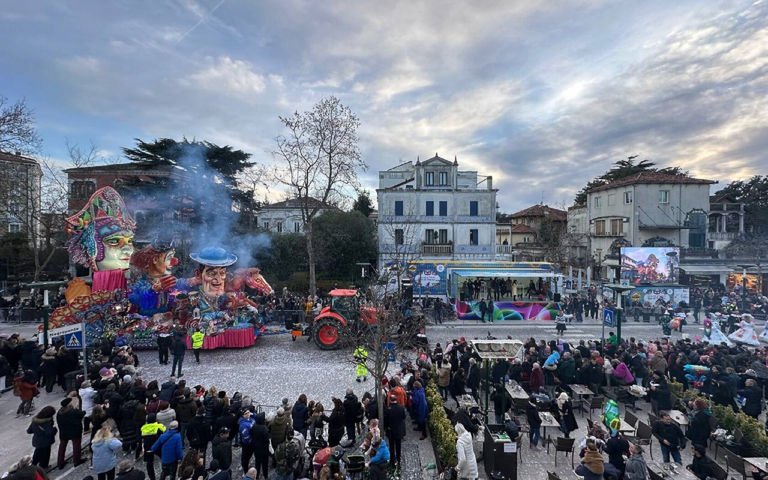
En el año 1797 Napoleón Bonaparte derogó los festejos de carnaval, que fueron restablecidos recién en 1979 de forma oficial. Desde entonces la festividad da inicio cada comienzo de cuaresma.
Los trajes que se utilizan son característicos de los años 1750 y abundan las maschera nobile, que es una careta blanca con ropaje de seda negra y sombrero de tres puntas.
Después de 1972 se han ido sumando otros colores a los trajes, aunque las máscaras siguen siendo en su mayoría blancas, plateadas y doradas.
Con la primera edición del reciente Carnaval se estableció simultáneamente un programa de eventos y un calendario detallado para el nuevo gran evento. Se establece que la fecha de inicio de las celebraciones oficiales coincida con el sábado anterior al Jueves Gordo y finalice con el Martes Gordo, con una duración total de sólo once días. A diferencia del Carnaval del pasado, que durante mucho tiempo tuvo una duración oficial de seis semanas, el Carnaval moderno se desarrolla con un programa concentrado, pero lleno de eventos individuales.
Como en el pasado, también hoy el Carnaval de Venecia representa una grandiosa fiesta popular para un gran público de todas las edades. Fiestas callejeras y eventos de todo tipo amenizan las jornadas de grupos de máscaras y turistas, que se reparten alegremente por la ciudad.
Además de las fiestas oficiales en la plaza entre campi y campielli, hoy como ayer se organizan diversas fiestas privadas y bailes de máscaras en los grandes palacios venecianos. En estos lugares, ricos en mobiliario y atmósferas casi inalteradas en el tiempo, es posible revivir los antiguos esplendores y la tradición del Carnaval del pasado. Entre los eventos de carácter internacional, el Baile Ducal se celebra desde 1994 y se celebra en el Palacio Pisani Moretta del siglo XV, situado en el Gran Canal. El nombre de la danza deriva del título de los líderes electos (dux), que gobernaron Venecia hasta la caída de la República de Venecia en el siglo XVIII.
Cada año participan en el baile unos cuatrocientos invitados vestidos con trajes de época y máscaras. El evento es la reconstrucción de un baile de máscaras del siglo XVIII e incluye una comida de cocina veneciana. A lo largo de los años, el entretenimiento ha contado con actuaciones de cantantes de ópera, músicos, artistas de burlesque y personajes de la commedia dell'arte.
Las Máscaras.
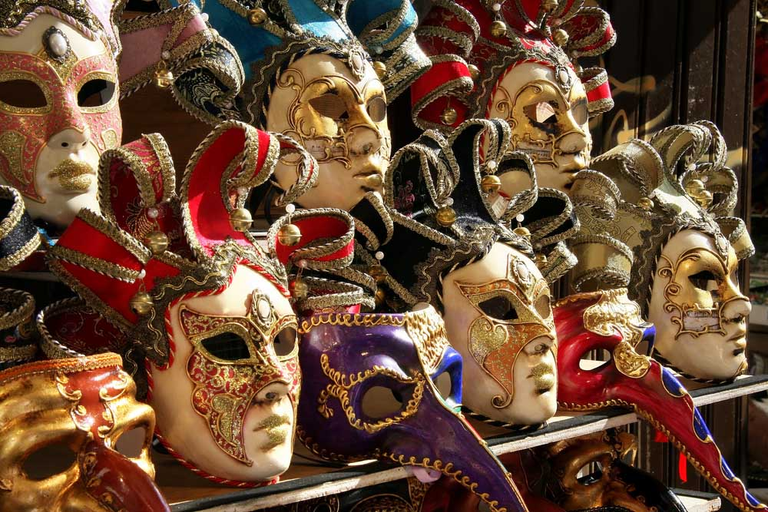
El Carnaval de Venecia ha sido, durante siglos, uno de los eventos más esperados del año. Cada invierno, la ciudad se prepara para recibir a los turistas (y no solo) en el ambiente más festivo de todos los tiempos, hecho de colores, tradiciones, dulces típicos y las inevitables máscaras.
Un poco de historia: el Carnaval de Venecia tuvo lugar por primera vez en la segunda mitad del siglo XIII y desde entonces ha representado una celebración de la libertad de los roles impuestos por la sociedad, las inhibiciones y la etiqueta social.
Y es precisamente de la necesidad de relieve y ligereza que surgió la tradición, aún hoy viva, de llevar máscara. De hecho, las máscaras y los disfraces garantizaban el anonimato y conducían a una especie de nivelación entre clases sociales y grupos religiosos.
¿Estás planeando una estancia en Venecia? ¡Echa un vistazo a nuestra oferta especial dedicada al Carnaval!
El Bauta.
Entre las máscaras venecianas tradicionales, la Bàuta es sin duda la más conocida, aunque sólo sea por sus más de 500 años de historia.
Es una máscara rectangular blanca con una pequeña protuberancia en lugar de boca. Esto no sólo le permitía comer y beber sin quitárselo, sino que también creaba un ligero cambio en la voz para garantizar aún más el anonimato.
Suele ir acompañado de un manto y del tricornio, el antiguo sombrero veneciano de tres puntas.
El Mattacino.
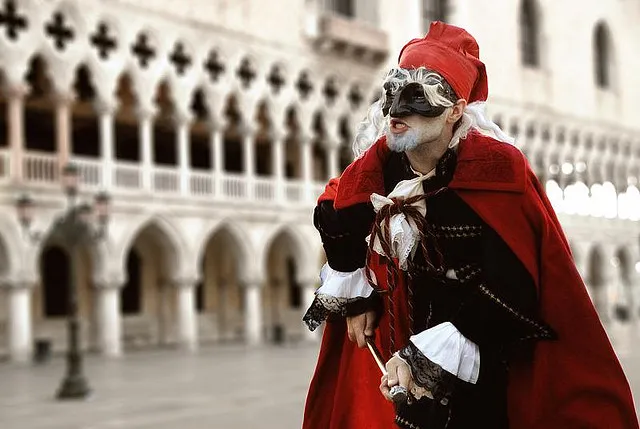
Es una de las máscaras típicas del Carnaval de Venecia que más fácilmente encontrarás: es una especie de payaso con un vestido multicolor. Alguna vez fueron conocidos por arrojar huevos perfumados a los transeúntes, usando una especie de tirachinas.
La Moreta.
La Moreta, en italiano la moretta, era la máscara femenina por excelencia. En realidad su origen es francés y se trata de una sencilla máscara de terciopelo negro.
Su peculiaridad es que la mujer tenía que sostenerlo sujetando un botón entre sus labios.
El Médico de la Plaga.
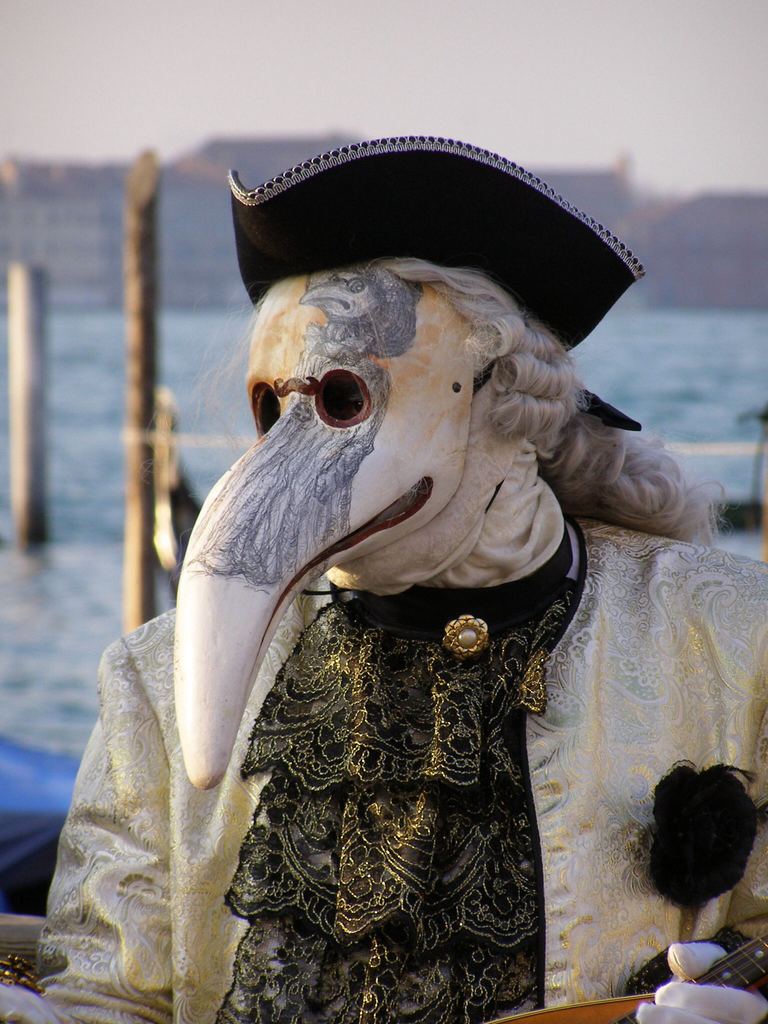
Máscara con una nariz larga y puntiaguda, similar al pico de un pájaro, que originalmente usaban los médicos durante las epidemias de peste para filtrar el aire. Hoy es una de las máscaras más reconocibles durante el Carnaval de Venecia.
Gracias a la rica tradición de la Commedia dell'Arte, también se generalizaron máscaras y disfraces que representaban los estereotipos de la sociedad veneciana de la época.
Pantalone.
Pantalone es probablemente la máscara veneciana más conocida. Se caracteriza por su habla veneciana franca y musical. Las hipótesis etimológicas sobre el origen del nombre son diferentes: podría derivar de San Pantalone o de "piantaleoni", nombre con el que los comerciantes que iniciaban actividades en las tierras conquistadas y ". plantados" eran llamados simbólicamente el león de San Marcos.
Pantalone es un viejo comerciante, a menudo rico y estimado, otras veces caído en la ruina. Representaba en todos los aspectos la ética mercantil de la burguesía veneciana que comenzaba a imponerse entre las clases dominantes.
El traje consta de un gorro de lana de estilo griego, una chaqueta roja y un pantalón marinero. Del cinturón cuelga una espada, un pañuelo o incluso un bolso. Viste una capa negra, a menudo forrada de rojo, y zapatillas negras en los pies.
Arlequín.
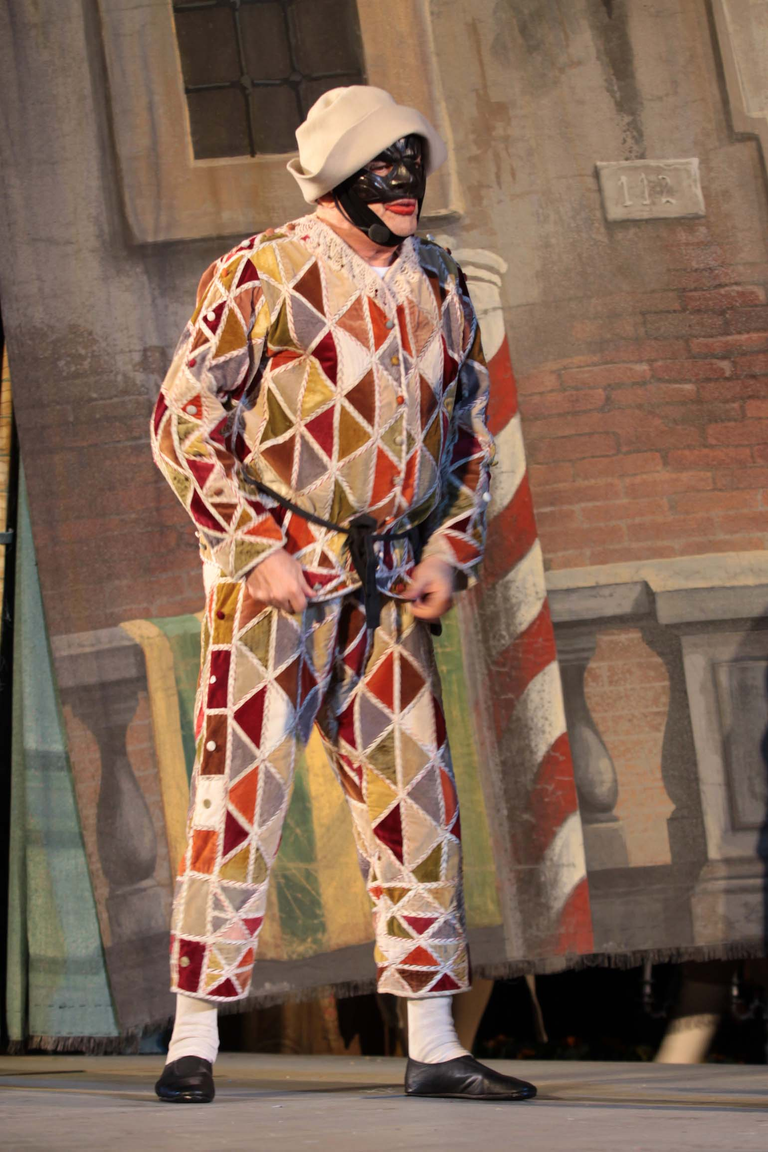
Es la máscara de la Commedia dell'Arte más conectada con el pueblo. El conjunto se compone de chaqueta y pantalón con parches muy coloridos e irregulares, un sombrero de fieltro blanco y un cinturón del que cuelga la espátula de madera, normalmente utilizada para mezclar la polenta. En su rostro lleva una media máscara negra y es un personaje tonto y algo crédulo.
Colombina.
Colombina es la fiel compañera de aventuras de Arlequín (de hecho está enamorada de él) y, como él, tiene sus orígenes en la tradición popular. Sus rasgos distintivos, que siempre afloran también en el escenario, son la astucia y la coquetería.
El vestido es sencillo, a veces con parches de colores como el de Arlequín, y se remata con una gorra blanca y un delantal del mismo color. Rara vez usa máscara y se expresa en varios dialectos, siendo el veneciano uno de sus favoritos.
Source images / Fuente imágenes: Carnevale Venezia.



Upvoted. Thank You for sending some of your rewards to @null. Get more BLURT:
@ mariuszkarowski/how-to-get-automatic-upvote-from-my-accounts@ blurtbooster/blurt-booster-introduction-rules-and-guidelines-1699999662965@ nalexadre/blurt-nexus-creating-an-affiliate-account-1700008765859@ kryptodenno - win BLURT POWER delegationNote: This bot will not vote on AI-generated content
Telegram and Whatsapp